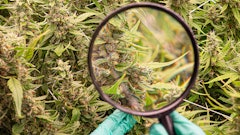
Missouri has approved roughly 25,000 medical cannabis cards, according to a local KCTV report.
The state has 10 qualifying conditions in its medical cannabis program, and released its applications for patients, caregivers and businesses in June.
Missouri residents must complete the application and provide proof of a qualifying medical condition, as well as pay a fee, to participate in the program, KCTV reported. Within a few weeks, they receive a digital medical card from the state, although Missouri has not yet licensed dispensaries to serve the market; the licenses are expected to be issued by Jan. 24.
The state issued 10 medical cannabis testing lab licenses at the end of December, followed by 60 cultivation licenses. Earlier this month, Missouri issued licenses to 86 medical cannabis manufacturing facilities, which will be responsible for producing cannabis-infused products such as edibles, tinctures and concentrates.























